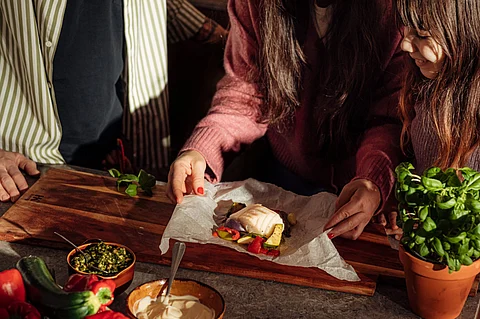

The Norwegian Seafood Council has released shocking figures revealing that fish and seafood consumption in Norway hit its lowest level since 2003, based on data until 2022. Progressively since 2015, the consumption of these products in Norway has been decreasing, with the only exception in 2021.
This gap in results shows the significant change in consumption in Norway. Specific figures show a decrease of 11%, from an average consumption of 21.22 kilograms per person in 2003 to 18.96 kilograms in 2022.
The primary reason for the decline in fish and seafood consumption is the increase in prices of seafood products. However, this is not the only significant aspect, as the report also identifies other crucial factors, such as the lack of knowledge about seafood preparation, time constraints, and availability.
"We see that it is seafood products that are increasing in price the most, and people are buying them the least," said Christian Chramer, managing director of the Seafood Council. In contrast, sales of cheaper seafood products have increased recently. "This suggests that people would like to eat fish," said Chramer. And in a survey conducted by the Seafood Council, as many as 7 in 10 Norwegians also say they want to eat more fish.
Thus, in response to the situation, new dietary advice is being given in the Nordic and Baltic countries, highlighting the health and climate benefits of increased seafood consumption. Nevertheless, despite marketing efforts and campaigns to inspire greater seafood consumption, high prices continue to take their toll.
While it is true that inflation has caused a generalized rise in food, it has not been equal for all food products. Sweets such as sugar, chocolate, jam, and honey have experienced much lower price increases in comparison to other recommended foods such as fruits, vegetables, and meats.
Thus, despite the challenges that have come to light because of this survey, the Seafood Council will continue to invest in seafood consumption in the future.
They continued to point out that the new dietary advice maintains the recommendations for higher fish consumption. Moreover, they provided the ideal amounts of fish and seafood per week, which are between 300-450 grams. They also pointed out that 200 grams of this should preferably be fatty fish such as salmon, trout, herring, or mackerel, clarifying that usually a fish fillet is 150 grams.
The Norwegian Seafood Council (NSC) is a government-owned company that promotes Norwegian seafood globally. Supported by the Norwegian seafood industry, the NSC focuses on market development, research, and reputation management. Located in Tromsø and representatives in twelve key international markets, the NSC plays a vital role in expanding Norwegian seafood.
